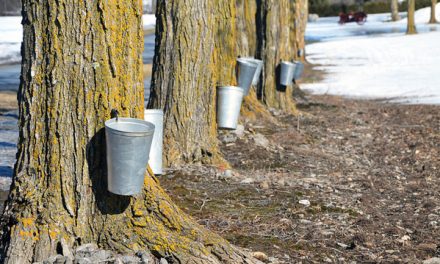by Jakob Vogel
AgriNews Contributor
In cooler temperatures, cows in milking condition typically thrive as we eliminate the stress from heat and humidity. In addition, we are reducing the impacts from fresh feeds continuously being introduced to the milking herd. Unfortunately, as all producers will agree – nothing is perfect and there is always a new challenge waiting around the corner.
Calf management seems to struggle during the winter months compared with the summer months for three main reasons: ventilation, caloric intake and disease prevalence. Each of these pillars of calf health will be discussed further.
Ventilation for calves has been a hot topic in both the research world and in practical application, say consultants and engineers who are trying to figure out the best functioning solution. The concern with ventilation irrespective of the time of year comes down to the turnovers of air per hour and the speed at which this fresh air is replacing old stale air.
The fine line between good and poor ventilation often comes down to drafts. Drafts of cold air can be found in all calf set-ups. The danger of drafts is that, depending on the size and flow of air, they may masquerade as a fresh air portal, but without adequate heating before hitting the calf, we are increasing the odds of the calf becoming a problem animal. These problems include pneumonia, scours, decreased growth rate and subsequently, subpar performance once she enters the milking herd.
When trying to improve the ventilation of the calf area, in addition to drafts, the presence of ammonia should be monitored. Unfortunately, it is very common for our sense of smell to fail us, especially when it comes to ammonia. The “not that bad” argument is often heard when discussing ventilation. The periods of the year where ammonia issues become more apparent are typically during the winter for calves, and in the summer for milking cows.
It is quite easy to test the calf area and many resources are available to assist with these assessments. Ammonia strip tests are a very simple farm tool for detecting and estimating the ammonia concentration in the air. This tool is in common use in other agricultural practices (especially poultry). The other tool that may be a little more difficult to find is a fogger, used to measure the turnovers of air within a given area.
Milk intake is the calf’s only source of energy for the first few weeks of life. Although bedding type and quantity plays a large role in the partitioning of the energy (used for growth rather than heat), it is often suggested that an additional meal be fed to calves through the winter months to improve and increase the daily caloric intake. This is mainly directed to producers who are feeding twice daily rather than those using automated feeding systems of three to four feedings per day.
Typically, in systems where multiple feedings (3x or robotic) are part of the routine, we see less impacts from colder temperatures. However, linking this back to environmental factors, we need to consider the thermal-neutral zone of the calf (around 10 C depending on the source). In cooler facilities there is also the option of increasing the fat content of the milk replacer to increase caloric intake. This strategy is not as successful as introducing an additional feeding.
Moving forward, the importance of measuring and monitoring disease throughout the year will increase. Heavier selections are being done with younger heifers to limit rearing costs and more rapidly improve the herds potential. Disease prevention will be key, and is aided by implementing simple yet precise protocols to adapt calf management to the winter months.











